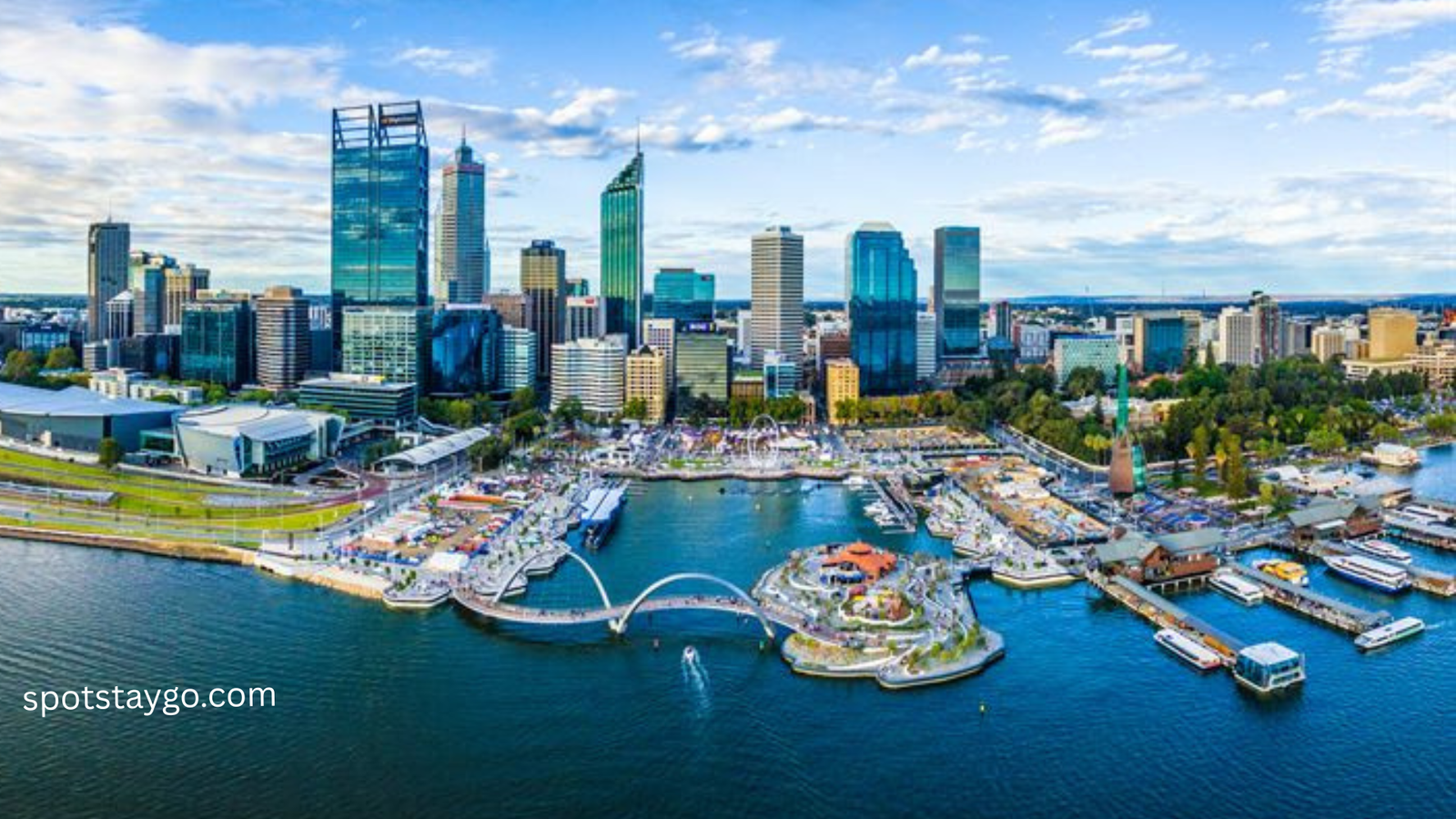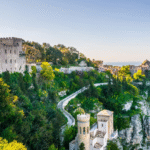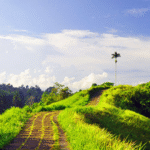Epic Travel Destinations in Australia 2025- Australia, officially known as the Commonwealth of Australia, is a country that comprises the mainland of the Australian continent, the island of Tasmania, and numerous smaller islands. Covering an area of about 7,688,287 square kilometers (2,968,464 square miles), it is the sixth-largest country in the world and the largest in Oceania.
Australia is considered the flattest and driest inhabited continent on Earth. The country is renowned for its diversity – thanks to its vast size, it offers a wide range of landscapes and climates. While the interior regions are dominated by deserts, the coastal areas are home to lush tropical rainforests.
Epic Travel Destinations in Australia 2025-
In 2025, Australia offers some of the most popular travel destinations for visitors. Iconic cities like Sydney and Melbourne, along with natural wonders such as the Great Barrier Reef and Uluru, remain at the top of every traveler’s list.
In addition, unique experiences like exploring the Ningaloo Reef and driving along the Great Ocean Road continue to attract tourists. Other notable highlights include the Kakadu National Park, Tasmania, and renowned wine regions such as the Barossa Valley.
Epic Travel Destinations in Australia 2025-
A. Cities & Culture–
| Sydney | Melbourne |
| Perth | Brisbane |
1. Sydney–
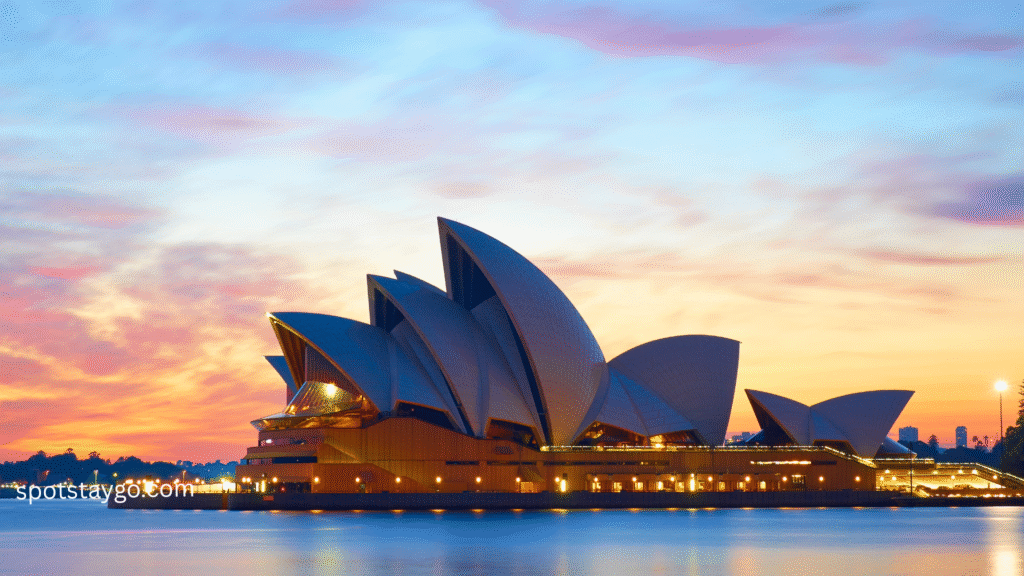
The Vibrant Heart of Australia- Sydney, the capital of New South Wales, is the most populous city in Australia. Located on the eastern coast, the city is built around the stunning Sydney Harbour. It stretches about 80 kilometers, from the Pacific Ocean in the east to the Blue Mountains in the west. To the north, Sydney extends to Ku-ring-gai Chase National Park and the Hawkesbury River, while to the south it reaches the Royal National Park and Macarthur region.
Greater Sydney consists of 658 suburbs spread across 33 local government areas. Its residents are affectionately known as “Sydneysiders”, and the city is popularly nicknamed the Emerald City and the Harbour City.
* Top Places to Visit in Sydney–
- Sydney Opera House
- Sydney Harbour Bridge (for a walk or the thrilling BridgeClimb)
- Bondi Beach
- Darling Harbour
Other must-visit attractions include The Rocks historic district, the Royal Botanic Garden, Taronga Zoo, and day trips to the Blue Mountains.
2. Melbourne-
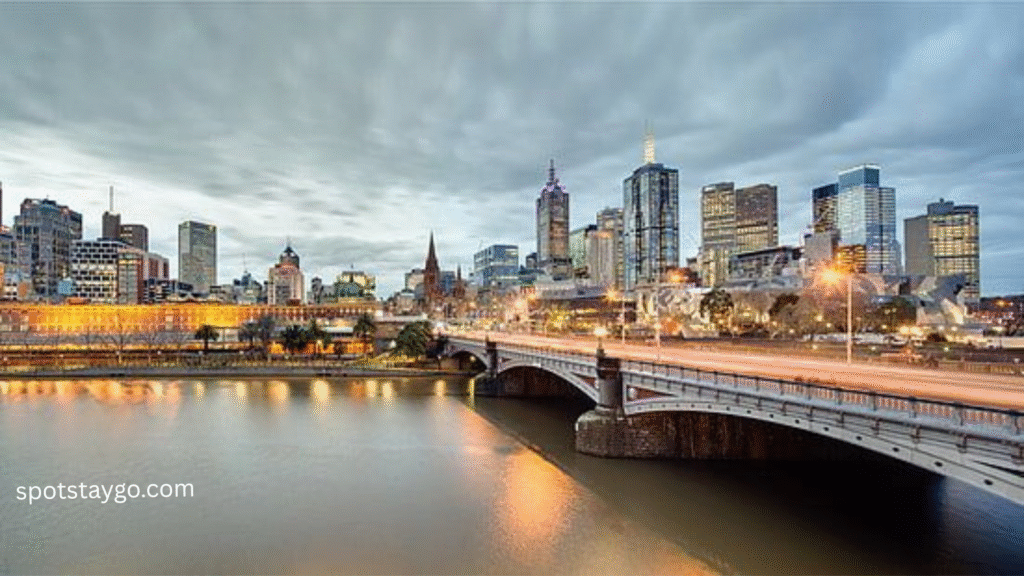
Capital of Victoria- Melbourne, the capital of the Australian state of Victoria, is its most populous city and the second most populated city in Australia after Sydney. The name Melbourne generally refers to a vast metropolitan area covering about 9,993 square kilometers (3,858 sq mi) and encompassing 31 local government areas. It is also specifically used for the City of Melbourne, the local government area that includes the Central Business District (CBD) and some of the surrounding neighborhoods.
* Top Places to Visit in Melbourne–
- Iconic landmarks like the Melbourne Skydeck and Federation Square
- Cultural hubs such as the National Gallery of Victoria and Queen Victoria Market
- Natural attractions including the Royal Botanic Gardens and nearby Phillip Island, famous for its Penguin Parade
- A nostalgic ride on the historic Puffing Billy Railway
- Exploring the vibrant street art of Hosier Lane
- And for an unforgettable adventure, a day trip along the Great Ocean Road
3. Perth-

The Capital of Western Australia- Perth, the capital of Western Australia, is the country’s fourth most populous city. By 2023, the Greater Perth region had a population of over 2.3 million people. Often referred to as the world’s most isolated major city, Perth is located in the southwestern part of Western Australia. Most of its metropolitan area lies on the Swan Coastal Plain, nestled between the Indian Ocean and the Darling Scarp. The city originally grew around a British settlement on the Swan River, which today extends to the Central Business District (CBD) and the historic Fremantle Port.
*Top Places to Visit in Perth:
- The natural beauty of Kings Park
- Rottnest Island and its adorable quokkas
- The historic port city of Fremantle
- The lively coastal hub of Scarborough Beach
- Wildlife encounters at Caversham Wildlife Park
- Swan Valley’s renowned wine region and breweries
- The peaceful Swan River and the iconic Cottesloe Beach
4. Brisbane-
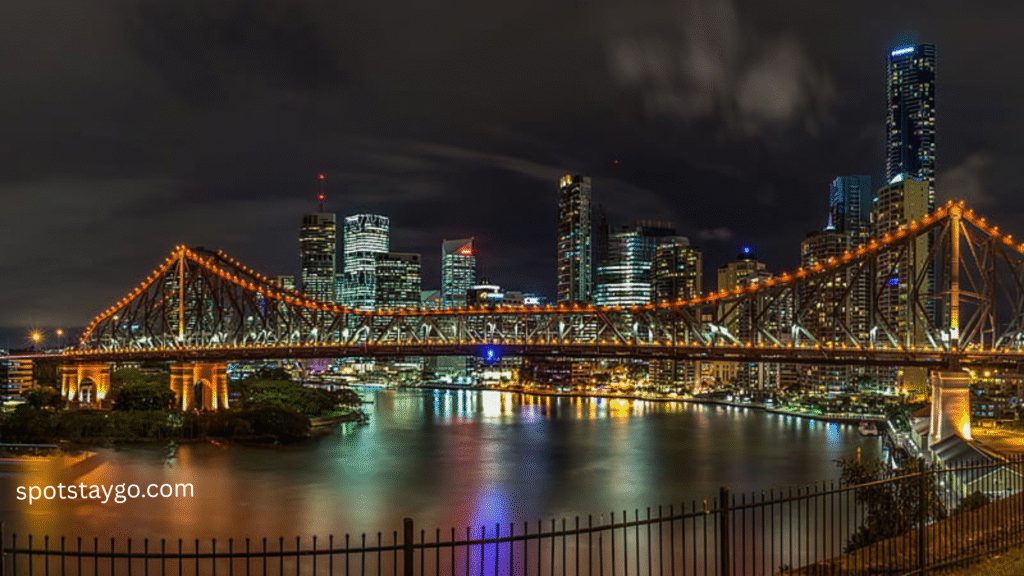
The Capital of Queensland- Brisbane is the capital and the largest city of Queensland. It is also Australia’s third most populous city, with a population of around 2.8 million. Located in the heart of South East Queensland, it forms part of a larger urban region that is home to over 4 million people.
The city’s Central Business District (CBD) sits on a peninsula of the Brisbane River, about 15 kilometers from its mouth at Moreton Bay. The greater Brisbane metropolitan area spreads across the hilly floodplains of the Brisbane River Valley, nestled between Moreton Bay and the Taylor and D’Aguilar mountain ranges.
Greater Brisbane includes several local government areas, the most central being the City of Brisbane. Locals are affectionately known as Brisbanites.
In 2025, tourists will be able to enjoy Brisbane’s popular attractions such as the Lone Pine Koala Sanctuary, South Bank Parklands, and the Mount Coot-tha Summit Lookout.
Other highlights include the Australia Zoo, Story Bridge, Brisbane River Cruise, and the Wheel of Brisbane, each offering unique experiences.
For nature and wildlife lovers, Moreton Island and North Stradbroke Island are excellent choices. Meanwhile, adventure seekers can try the Story Bridge Adventure Climb or enjoy a Segway tour for a thrilling experience.
B. Natural Wonders & Wildlife–
| Great Barrier Reef | Uluru |
| Ningaloo Reef | Kakadu National Park |
1. Great Barrier Reef –
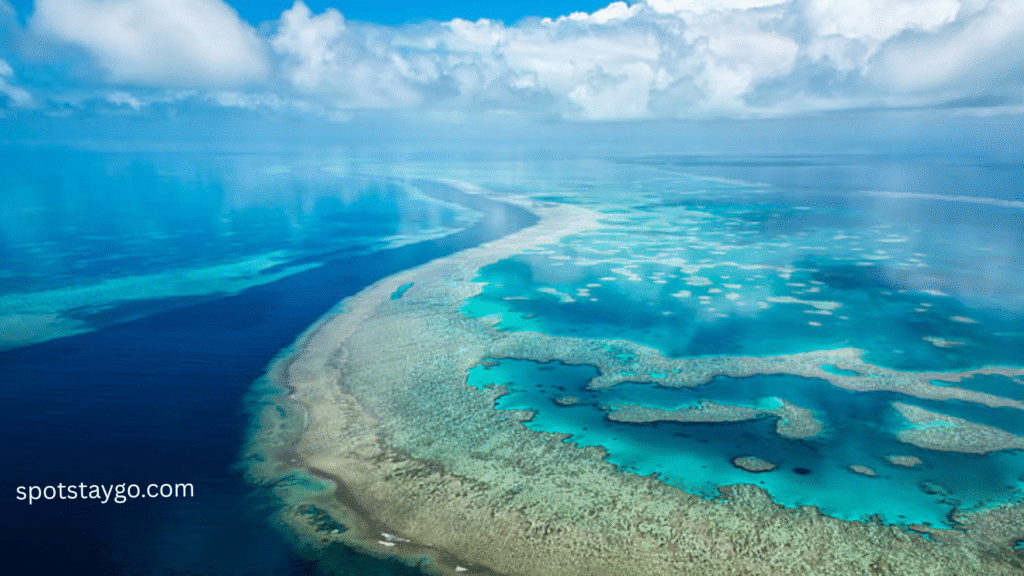
A Natural Wonder- The Great Barrier Reef is the world’s largest coral reef system. It is made up of around 2,900 individual reefs and 900 islands, stretching over 2,300 kilometers and covering an area of 344,400 square kilometers. This vast reef lies in the Coral Sea, off the coast of Queensland, Australia, and is separated from the mainland by a deep channel that is more than 61 meters deep and up to 160 kilometers wide.
The Great Barrier Reef is so immense that it can even be seen from space, making it the largest single structure created by living organisms on Earth. A significant portion of the reef is protected by the Great Barrier Reef Marine Park, which helps regulate human activities like fishing and tourism.
The reef is home to an incredible diversity of marine life, including:
- 400+ species of coral
- 1,500+ species of fish
- 6 of the world’s 7 species of sea turtles
However, this natural wonder today faces serious threats such as climate change, coral bleaching, pollution, and outbreaks of the crown-of-thorns starfish.
2. Uluru-
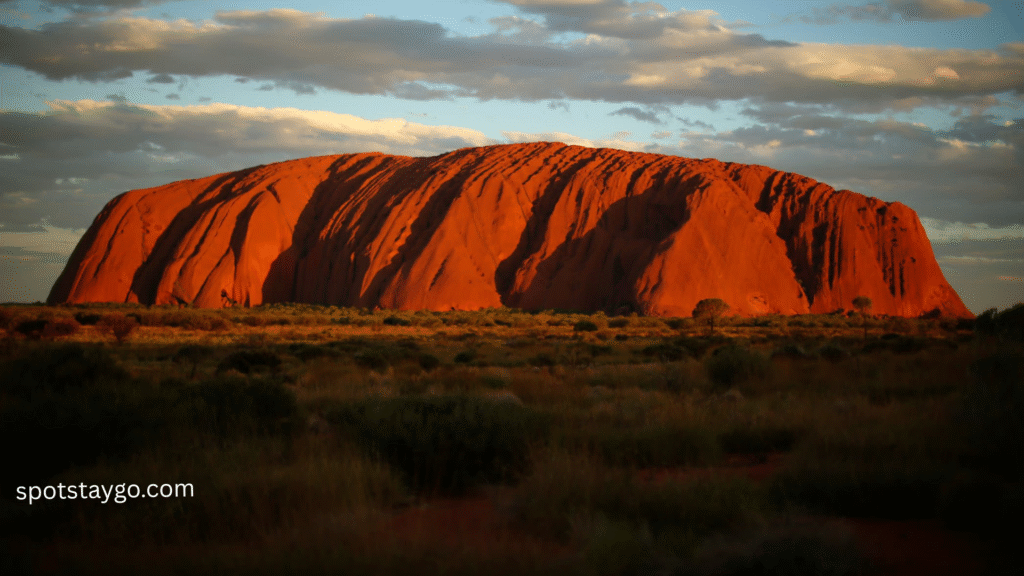
Uluru, also known as Ayers Rock, is a massive sandstone monolith. It is located in the southern part of the Northern Territory, about 335 kilometers southwest of Alice Springs, at the very heart of Australia.
The site holds deep spiritual significance for the local Indigenous Pitjantjatjara people, known as the Anangu. The surrounding area is rich with waterfalls, waterholes, rock caves, and ancient rock art, making it a place of both cultural and natural importance. Because of its unique heritage, Uluru is listed as a UNESCO World Heritage Site.
Together with Kata Tjuta (also called the Olgas), Uluru forms the two main attractions of the Uluru–Kata Tjuta National Park. Visitors can enjoy a wide range of unique experiences here, such as:
- Watching the spectacular sunrise and sunset views from Talinguru Nyakunytjaku
- Exploring Kata Tjuta through the Walpa Gorge or Valley of the Winds trails
- Visiting the Uluru–Kata Tjuta Cultural Centre
- Walking around the scenic Mutitjulu Waterhole
In addition, travelers can experience the Field of Light art installation, join guided tours, go on camel rides, and take part in cultural activities that offer deeper insights into Anangu traditions.
3. Ningaloo Reef-
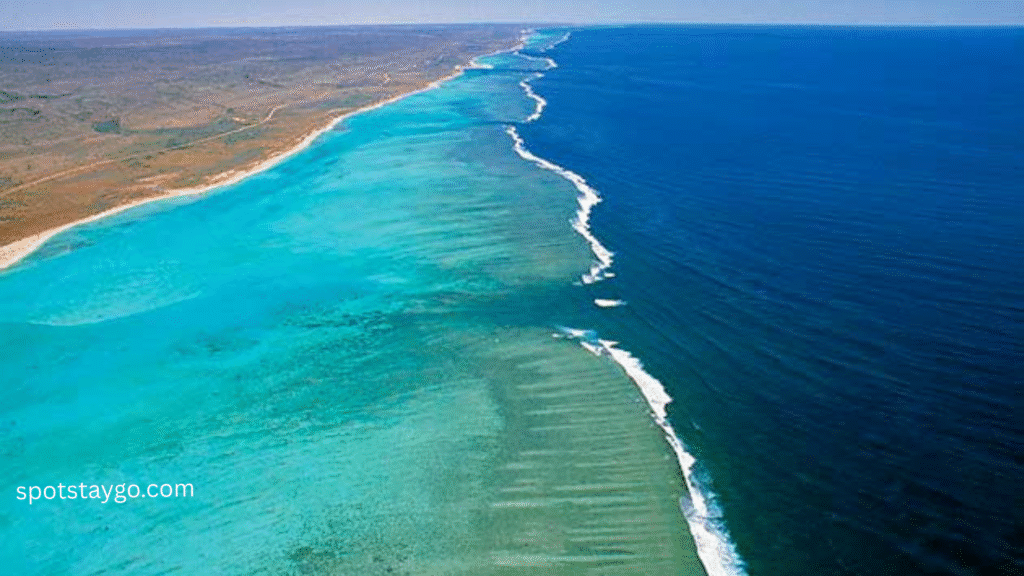
A Natural Wonder of Western Australia- The Ningaloo Coast, located on the north-west coast of Western Australia, is a UNESCO World Heritage Site. Spanning nearly 705,015 hectares, it stretches along the eastern edge of the Indian Ocean, about 1,200 kilometers north of Perth.
The highlight of this coast is the Ningaloo Reef, a spectacular 260-kilometer-long coral reef. It is the largest fringing reef in Australia and unique because it lies so close to the mainland. The region also includes the beautiful Muiron Islands and Cape Farquhar.
The name “Ningaloo” comes from the Wajari Aboriginal language, meaning “promontory”, “deep water”, or “high land jutting into the sea”. The Baiyungu and Yinigudura Yamatji people are the traditional custodians of this land.
Every year, the coast and reef attract around 200,000 visitors. However, in both 2011 and 2025, the reef was impacted by coral bleaching events caused by marine heatwaves.
Top Attractions at Ningaloo Reef-
- Exmouth and Coral Bay – the main gateways to the reef
- Cape Range National Park – famous for rugged landscapes and wildlife
- Swim with Whale Sharks (March–July)
- Manta Rays (year-round) and Humpback Whales (June–October) – encounter them up close
- Turquoise Bay and Oyster Stacks – perfect snorkeling spots
- Jurabi Turtle Centre – a unique chance to see marine turtles
4. Kakadu National Park-
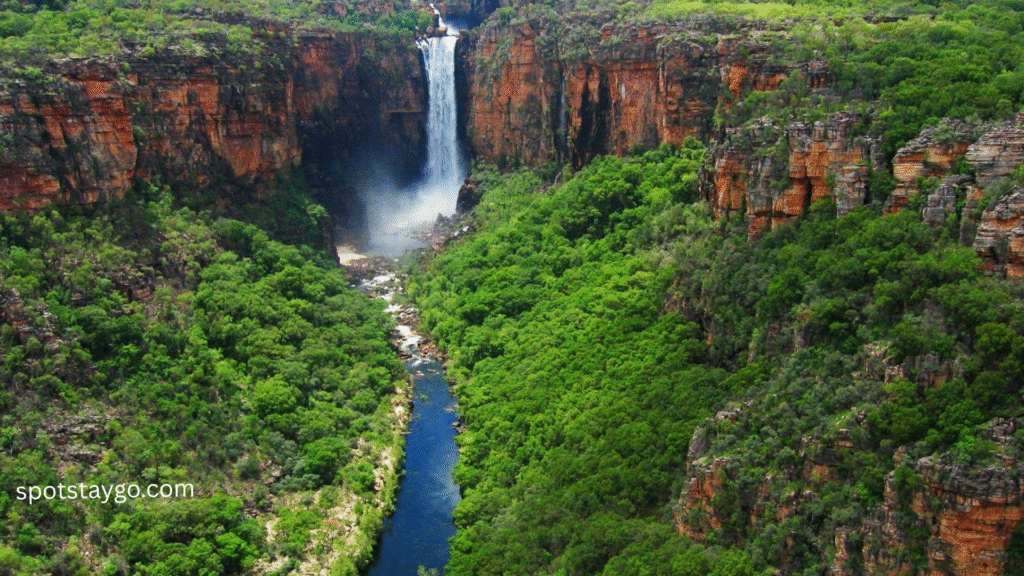
Australia’s Heritage- Kakadu National Park is a protected area located in Australia’s Northern Territory, about 171 kilometers southeast of Darwin. It is also recognized as a UNESCO World Heritage Site. Kakadu has additionally been declared a local government area, covering nearly the same expanse as the national park itself. According to the 2016 Australian Census, the park is home to just 313 residents.
The name Kakadu is believed to have originated from a mispronunciation of “Gagudju”, the name of an Aboriginal language once spoken in the park’s northwestern region. Explorer Baldwin Spencer mistakenly referred to the people of the Alligator River area as the “Kakadu tribe,” and the name has been in use ever since.
Aboriginal Culture and History
Aboriginal people have been living continuously in the Kakadu region for around 60,000 years. The park is world-renowned for its cultural sites and rock art, with more than 5,000 recorded art sites that showcase thousands of years of Aboriginal traditions and way of life. Archaeological evidence indicates human habitation here for at least 40,000 years, and possibly as long as 65,000 years.
What to See and Do
Visitors to Kakadu National Park can enjoy a wide range of remarkable experiences, including:
- Exploring the ancient rock art sites of Ubirr and Nourlangie
- Witnessing spectacular waterfalls such as Jim Jim Falls and Gunlom Falls
- Taking a wildlife-rich cruise on the Yellow Water Billabong
- Learning about Aboriginal culture at the Warradjan Cultural Centre
- Other highlights include the scenic Maguk Gorge, the famous Cahills Crossing, and Mardukal Billabong, known for fishing opportunities
C. Scenic Drives & Adventure –
| Great Ocean Road | K’gari (Fraser Island) |
1. Great Ocean Road-
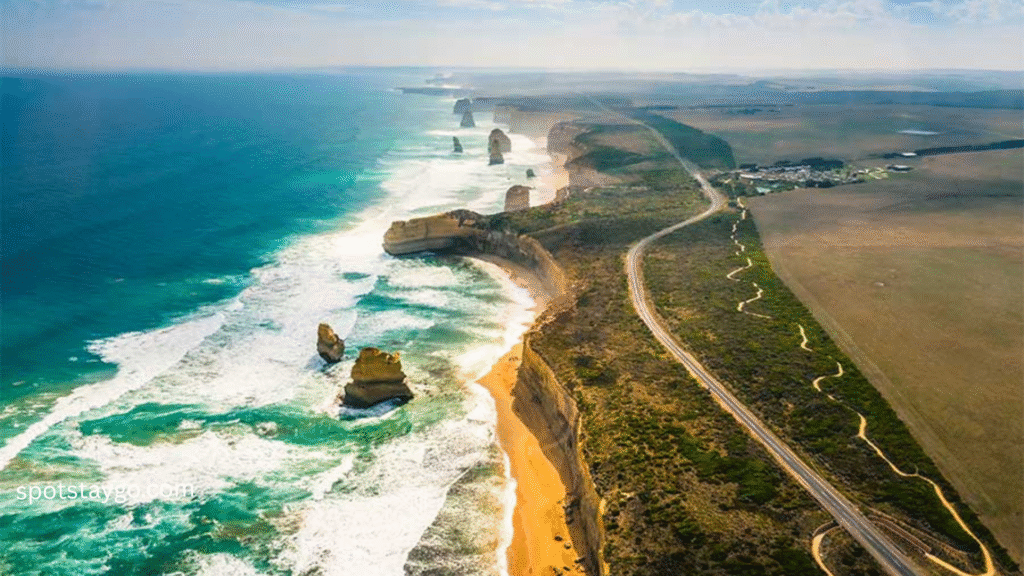
The Great Ocean Road is a world-famous 240-kilometer coastal highway listed as an Australian National Heritage site. Stretching between the Victorian towns of Torquay and Allansford, it was constructed between 1919 and 1932 by returned soldiers and dedicated to those who lost their lives in World War I. For this reason, it is recognized as the world’s largest war memorial.
Running along Australia’s southeastern coastline, the road offers travelers breathtaking views and access to several iconic landmarks. The most famous of these is the dramatic limestone rock formations known as the Twelve Apostles.
Tourism and Significance
The Great Ocean Road is one of Australia’s top tourist attractions. The nearby city of Geelong, close to Torquay, benefits significantly from the influx of both domestic and international visitors. Geelong Otway Tourism has described the road as “a priceless asset.” In 2008, the Royal Automobile Club of Victoria (RACV) voted it the top tourist experience in Victoria.
Major Highlights Along the Road
- Natural Wonders – The Twelve Apostles, Loch Ard Gorge, and London Bridge with their spectacular rock formations
- Charming Towns – Lorne and Apollo Bay, popular coastal getaways
- Scenic Landmarks – The Great Ocean Road Memorial Arch and Teddy’s Lookout
- Wildlife Encounters – Spot koalas near the Kennett River
- Nature & Adventure – Explore the ancient rainforests and waterfalls of Great Otway National Park, or enjoy a unique paddle ride with platypuses
2. K’gari (Fraser Island)-
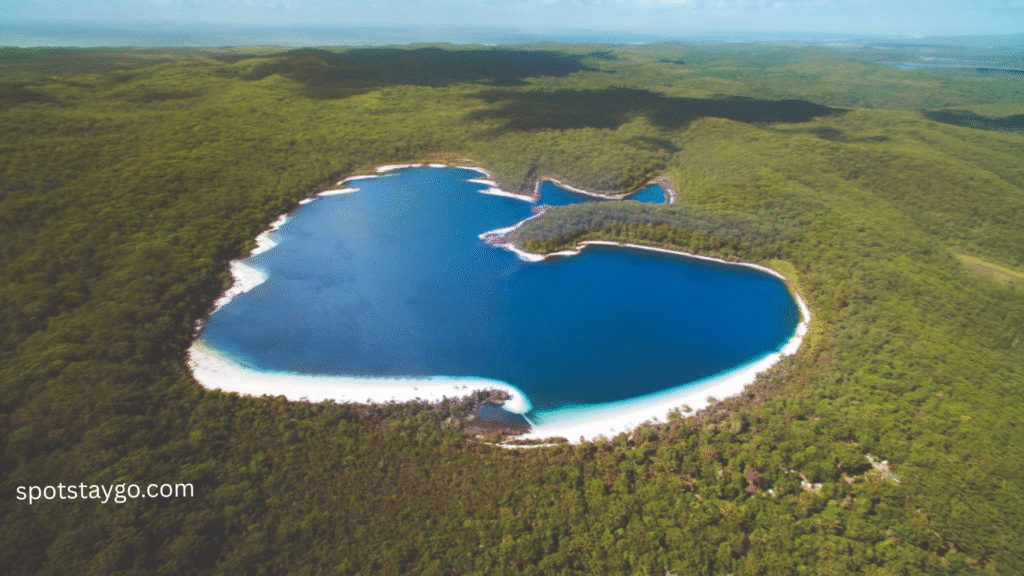
Queensland’s World Heritage Island- K’gari, formerly known as Fraser Island, is a World Heritage-listed sand island located off the southeastern coast of Queensland’s Wide Bay–Burnett region in Australia. The island lies about 250 kilometers north of Brisbane and falls under the jurisdiction of the Fraser Coast Regional Council. Together with its surrounding waters and parts of the adjacent mainland, K’gari forms the Great Sandy National Park.
According to the 2021 census, the island had a permanent population of only 152 residents, yet it welcomes around half a million visitors every year.
History and Naming
K’gari is part of the traditional lands of the Butchulla people. In their language, “K’gari” means “paradise.” After European arrival, the island was renamed Fraser Island in 1847, after Captain James Fraser, the owner of the ship Stirling Castle, who died here following a shipwreck in 1836.
In recognition of Indigenous heritage and after years of advocacy, the Queensland Government officially restored the island’s name to K’gari on 7 June 2023.
What to See and Do
K’gari is a natural wonderland, offering a perfect mix of beauty and adventure. Top attractions include:
- Lake McKenzie – a crystal-clear, freshwater lake with striking blue waters
- Lake Wabby – a unique lake surrounded by shifting sand dunes
- Eli Creek – a refreshing natural “lazy river”
- Maheno Shipwreck – the remains of a historic shipwreck
- Champagne Pools – naturally formed tidal pools perfect for a dip
- 75 Mile Beach – the world-famous stretch of golden sand
You can explore these highlights through 4WD adventures, ranger-guided tours, or even a day trip from Rainbow Beach.
D. Specialty Experiences–
| Barossa Valley | Tasmania |
1. Barossa Valley-
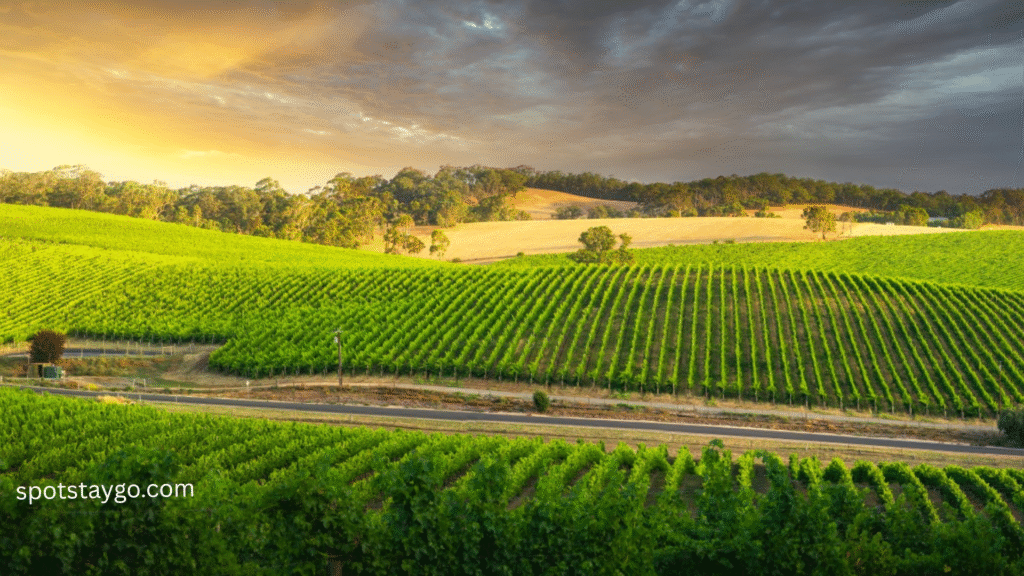
The Wine Paradise of South Australia- The Barossa Valley, located about 60 kilometers northeast of Adelaide’s city center, is one of South Australia’s most renowned regions. Shaped by the North Para River, the valley is globally famous for its wine production and as a popular tourist destination.
The main road through the valley, known as the Barossa Valley Way, connects the region’s key towns – Nuriootpa, Tanunda, Rowland Flat, and Lyndoch. Another highlight is the Barossa Trail, a scenic 40-kilometer (25-mile) walking and cycling path. It begins at Gawler on the Adelaide Plains and stretches eastward to Angaston, passing through picturesque towns along the way.
Traditional Heritage
The traditional custodians of this land are the Peramangk people, whose family groups have lived here for thousands of years. Evidence of their ancient presence can still be seen across the region in the form of artefacts, scarred trees, and rock shelters with paintings.
What to See and Do
Visitors to the Barossa Valley can enjoy a variety of memorable experiences, including:
- Touring iconic wineries such as Seppeltsfield Wines and Château Tanunda
- Indulging in fine dining at Hentley Farm or St Hugo
- Exploring the historic towns of Tanunda and Greenock
- Other activities like visiting the Barossa Sculpture Park, taking a breathtaking hot air balloon ride, or joining a wine tour
2. Tasmania-
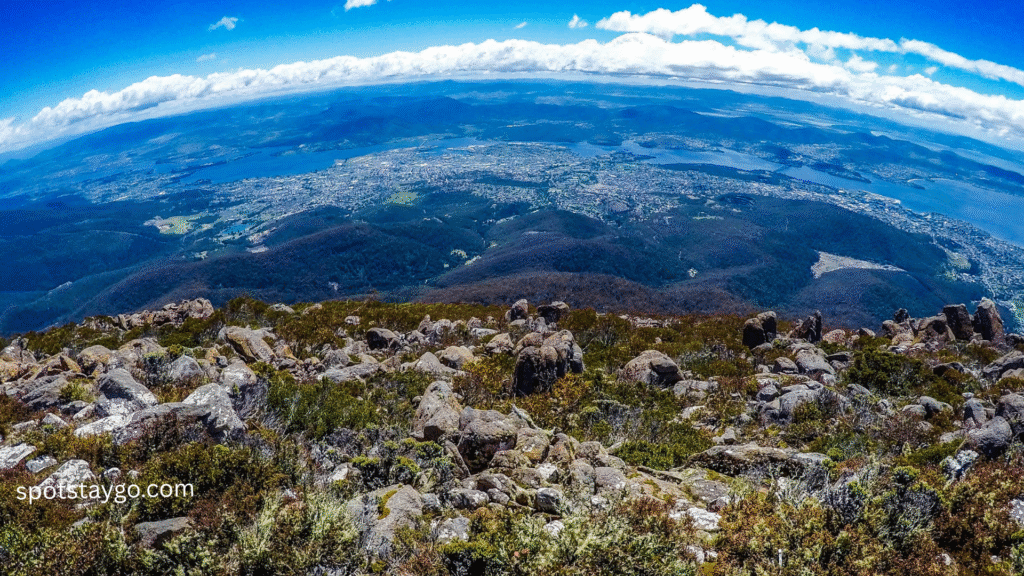
Tasmania is a beautiful island state of Australia, located about 240 kilometers south of the mainland, separated by the Bass Strait. The state includes the main island of Tasmania – the 26th largest island in the world – along with nearly 1,000 smaller surrounding islands. It is the smallest and least populated state of Australia, with a population of 573,479 as of June 2023. The capital city, Hobart, is also the largest city, home to around 40% of the state’s population in the Greater Hobart area. Tasmania is known as Australia’s most decentralized state.
Name and History
Tasmania was named after Dutch explorer Abel Tasman, who first sighted the island on 24 November 1642. He originally named it Anthony van Diemen’s Land, in honor of his sponsor, the Governor of the Dutch East Indies. Later, the English shortened it to Van Diemen’s Land. Finally, on 1 January 1856, the island was officially renamed “Tasmania” to honor its first European discoverer.
What to See and Experience
Tasmania offers a fascinating blend of nature, history, and culture:
- Natural Attractions – Cradle Mountain, Wineglass Bay, and the Bay of Fires
- Historic Sites – The Port Arthur Historic Site
- Urban Experiences – Hobart’s botanical gardens and vibrant food culture
- Wildlife Encounters – Bruny Island and the Bonorong Wildlife Sanctuary
Best Time to Visit
The ideal time to visit Tasmania is from late spring to early autumn (December to April), when the weather is perfect for outdoor adventures. Alternatively, the off-season (May to August) offers a unique, tranquil atmosphere for travelers seeking a different kind of experience.
Unforgettable Best Desert Safari in Dubai 2025
